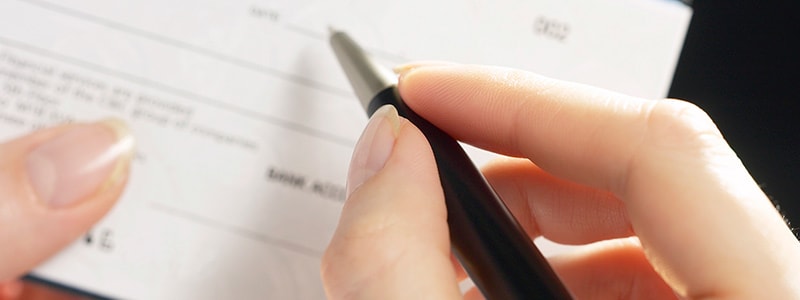Have you lost your wallet, chock full of credit cards? Are you worried that someone might have nabbed your key financial information? It's time to place a fraud alert.
What is a fraud alert? Fraud alerts help protect you against identity theft. They require creditors to take reasonable steps to verify that it’s you and not a criminal who has ordered new credit cards, loans or higher credit limits in your name. These creditors might reach out to you by phone to do this.
What are the different types of fraud alerts?
There are two mains types, as well as one for military members on active duty:
- Initial Fraud Alert
- Extended Fraud Alert
- Active Duty Fraud Alert
In this article, you’ll learn how to use fraud alerts to help protect against and respond to identity theft.
When should you order a fraud alert?
It's best to be proactive when it comes to fraud alerts. Here are some instances where they make sense:
- If you've lost your credit cards, and are worried someone else might have found them.
- If you've been robbed, and the thief made off with your credit cards.
- If you notice purchases on your credit card statements that you know you didn't make.
- If, after reviewing your credit report, you discover credit card accounts or loans that you know you never applied for.
- In short, any time you think someone might have stolen your financial information and is using it to make purchases or apply for credit.
How do you file for a fraud alert?
Filing for a fraud alert is simple.
- If you are concerned, but aren't sure that you've been a victim of identity theft, you can file for what is known as an Initial Fraud Alert.
- Fill out an online form at any one of the three national credit bureaus’ websites—Equifax, Experian or TransUnion—to request a temporary fraud alert. If you prefer, you can also call or email one of the bureaus.
- Equifax: 800-766-0008 or www.equifax.com
- Experian: 888-397-3742 or www.experian.com
- TransUnion: 888-909-8872 or www.transunion.com
- Explain that you've been the victim of identity theft or that you suspect you've been a victim of this crime.
- You'll have to provide proof of your identity, which usually means typing your Social Security number into an online form.
- That's it. You don't have to contact all three credit bureaus. The one bureau you do contact is required to send your request for a fraud alert to the other two bureaus.
What happens after you file for a fraud alert?
An Initial Fraud Alert is designed to be temporary, and remains on your credit reports for 90 days.
- The alert requires creditors who pull your credit reports—including credit card providers, lenders and other financial institution—to take reasonable steps to verify that it is you who are requesting new credit cards, loans or increases in your credit limits.
- This means that financial institutions might call you to verify that you are the one who asked for that new credit card or loan.
What if you're certain that you've been a victim of identity theft?
It's time to set up an Extended Fraud Alert, which offers even more protection.
- This type of alert is only available to consumers who have proof that their identities or credit cards have been stolen and have filed an identity theft report.
- You must send one of the credit bureaus an identity theft report—such as a police report or a report with the Federal Trade Commission—showing that you have been a victim of identity theft. You must also show proof of identity, usually by sending a copy of your driver's license to the bureau. (You can find the Identity Theft Report on the Federal Trade Commission’s identitytheft.gov website.) It’s a good idea to keep a copy of your driver’s license on file, in case you lose it.
- Again, the bureau to which you reach out will contact the other two bureaus.
- An Extended Fraud Alert lasts for seven years.
- Normally, each year, you can request one free copy of each of the credit reports maintained by the three credit bureaus at com. Once you place an Extended Fraud Alert, though, you can order two free credit reports from each of the bureaus within the first 12 months of filing.
- Again, creditors must take reasonable steps to verify your identity before issuing new credit in your name. This will often involve calling you to verify that you ordered the new credit.
- Once you’ve filed this type of alert, your name will be removed from prescreened offers of credit or insurance for five years.
What is the fraud alert for U.S. military members?
This is a proactive type of fraud alert that can prevent problems during your military tour. It’s known as an Active Duty Fraud Alert.
- Military personnel file this type of alert if they want to lower their risk of becoming a victim of fraud or identity theft while they are deployed overseas.
- This type of alert lasts for one year and can be renewed to match deployment.
- Again, creditors must take reasonable steps to verify that you have applied for new credit, loans or higher credit limits.
- You can file for this kind of alert at any one of the three major credit bureaus.
To better understand the risk of identity theft, you can read more about the warning signs.

Monitoring your credit? It may not be enough protection against identity theft.
LifeLock identity theft protection sees more threats to your identity, like your personal info on the dark web. And if you become a victim of identity theft, dedicated Identity Restoration Agents will work to fix it.
Start your protection now. It only takes minutes to enroll.





